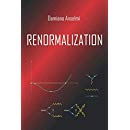Higher-derivative theories
We study the perturbative unitarity of the Lee-Wick models, formulated as nonanalytically Wick rotated Euclidean theories. The complex energy plane is divided into disconnected regions and the values of a loop integral in the various regions are related to one another by a nonanalytic procedure. We show that the one-loop diagrams satisfy the expected, unitary cutting equations in each region: only the physical degrees of freedom propagate through the cuts. The goal can be achieved by working in suitable subsets of each region and proving that the cutting equations can be analytically continued as a whole. We make explicit calculations in the cases of the bubble and triangle diagrams and address the generality of our approach. We also show that the same higher-derivative models violate unitarity if they are formulated directly in Minkowski spacetime.
Phys. Rev. D 96 (2017) 045009 | DOI: 10.1103/PhysRevD.96.045009
The Lee-Wick models are higher-derivative theories that are claimed to be unitary thanks to a peculiar cancelation mechanism. In this paper, we provide a new formulation of the models, to clarify several aspects that have remained quite mysterious, so far. Specifically, we define them as nonanalytically Wick rotated Euclidean theories. The complex energy plane is divided into disconnected regions, which can be related to one another by a well defined, albeit nonanalytic procedure. Working in a generic Lorentz frame, the models are intrinsically equipped with the right recipe to treat the pinchings of the Lee-Wick poles, with no need of external ad hoc prescriptions. We describe these features in detail by calculating the one-loop bubble diagram and explaining how the key properties generalize to more complicated diagrams. The physical results of our formulation are different from those of the previous ones. The unusual behaviors of the physical amplitudes lead to interesting phenomenological predictions.
J. High Energy Phys. 06 (2017) 066 | DOI: 10.1007/JHEP06(2017)066
We show that Minkowski higher-derivative quantum field theories are generically inconsistent, because they generate nonlocal, non-Hermitian ultraviolet divergences, which cannot be removed by means of standard renormalization procedures. By “Minkowski theories” we mean theories that are defined directly in Minkowski spacetime. The problems occur when the propagators have complex poles, so that the correlation functions cannot be obtained as the analytic continuations of their Euclidean versions. The usual power counting rules fail and are replaced by much weaker ones. Self-energies generate complex divergences proportional to inverse powers of D’Alembertians. Three-point functions give more involved nonlocal divergences, which couple to infrared effects. The violations of the locality and Hermiticity of counterterms are illustrated by means of explicit computations in scalar models and higher-derivative gravity.
Eur. Phys. J. C 77 (2017) 84 | DOI: 10.1140/epjc/s10052-017-4646-7

 Quantum Gravity
Quantum Gravity 


